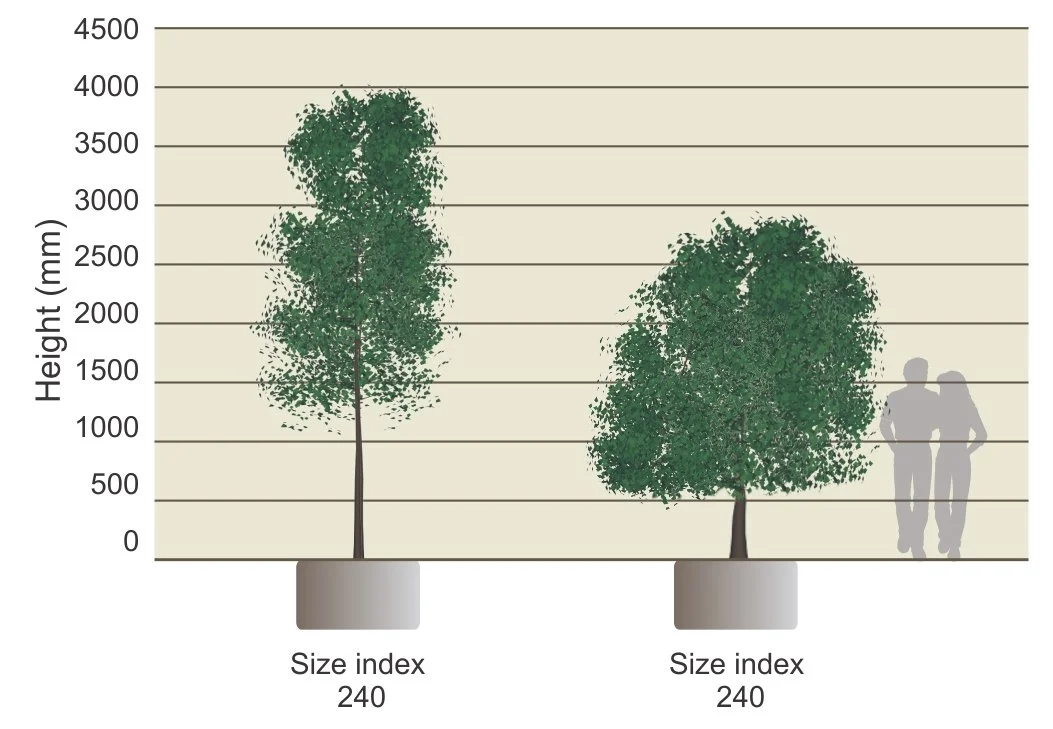Understanding the concept of “size index” – calculating the physical size of trees
Tree Size Index chart
For the tree buyer/user, using AS 2303 and the concept of size index is an easy-to-use tool for assessing or comparing quality, compliance with specification and value for money between competing suppliers – given that trees are traditionally quoted according to container size only; and that tells us little about the amount of tree we will actually get for the money. For the grower, using AS 2303 and the concept of size index is one important tool to measure quality and readiness for sale or, maybe, readiness for potting on to bigger containers. So, how does it work?
As a tree grows, it becomes taller and its trunk diameter increases. Some species are naturally stocky – thick stemmed and, comparatively short. Some, naturally taller, possess a more slender trunk or stem.
Under the Australian standard AS 2303, “size index” is a measure of the physical bulk of a tree. It is calculated simply by multiplying a tree’s height (in metres) by the calliper (in millimetres – measured at a height of 300mm above ground level). So:
A tall, slender tree, say 4 metres high with a calliper of 60mm has a “size index” of 240 (4 x 60).
At the other extreme a different, stockier species might have a height of 3 metres with a calliper of 80mm. It too has a size index of 240 (3 x 80).
The stockier tree typically has a bigger spread (or wider crown) than the taller more slender one. Although differently shaped, each tree is considered to have the same physical bulk.
400L Eucalypt
400L Fig


